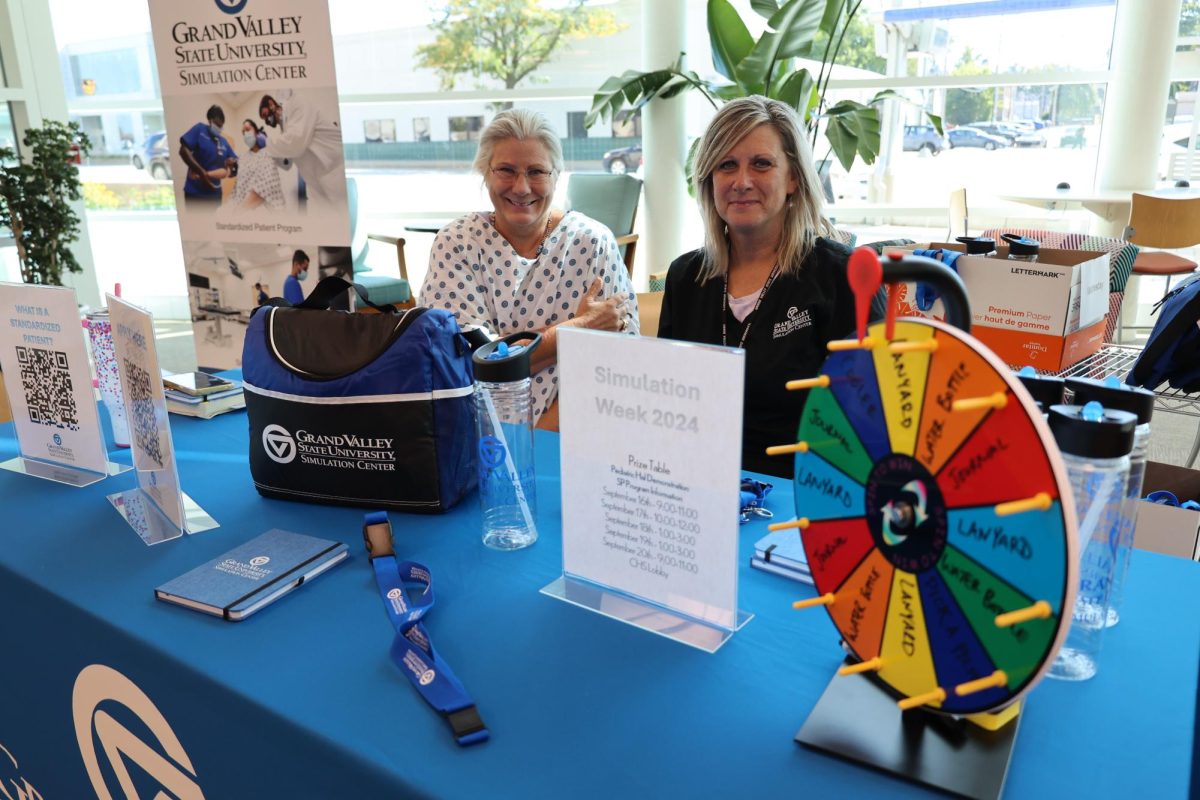An art creation event was hosted by the American Society for Clinical Laboratory Science (ASCLS) from Oct. 4-5 at Grand Valley State University, which allowed students to create artwork out of living microorganisms.
The ASCLS event was held at GVSU’s Cook-DeVos Center for Health Science. ASCLS invited

students and organization members to create “agar art,” which is the practice of painting with microorganisms on a petri dish “canvas.” Agar is a gel compound that frequently is used to diagnose patients and create cultures of microorganisms. This marks the third year that ASCLS has hosted the workshop, which demonstrates to students the intersection of science and creativity.
The event was in partnership with Laker Lab Scientists, a GVSU student organization that provides students with “an outlet for community involvement and professional development” through various resources and activities.
Though the event took place in the GVSU Medical Laboratory Science (MLS) lab, it was open to all students regardless of major, which allowed those who had no previous scientific experience to participate. ASCLS organizers offered guidance to the participants as they created their agar art pieces, providing tips and tricks along the way. After the agar artworks were completed, they were photographed and sent to the participants’ emails.

Participants were encouraged to submit their artwork to the American Society of Microbiology (ASM) for their 2024 agar art contest. The theme of this year’s contest centers around the question, “What brings you joy?”
According to Smithsonian magazine, agar powder (derived from seaweed) is mixed with sterilized water and nutrients to create a gelatinous substance. Scientists add microorganisms, such as fungi or bacteria, to the substance and observe their growth within the gel. Depending on the organisms implanted in the gel, agar will change colors, allowing a full palette of differing shades and hues. In scientific studies, agar is used to diagnose patients and test which microorganisms are present in their system. Scientists have been using agar to create art since the 1920s, but its popularity rose when the ASM hosted its first agar art contest in 2015.
Submissions for ASM’s agar art contest will remain open until 11:59 p.m. on Oct. 27.

“I think there is an art to any profession if you look at it the right way,” said MLS faculty member Mattie Brechbiel. “By taking a field like microbiology and placing it in a fun and accessible space, we give everyone the opportunity to experience science in a way that appeals to them.”
The President of Laker Lab Scientists, Chloe Jones, hopes students in attendance were able to learn more about lab careers through the event.
“By doing this art workshop, it allows us to show the community a bit of what we do in the laboratory, and hopefully spark interest in others to pursue Medical Laboratory Science as a career,” Jones said.
Both Brechbiel and Jones expressed their excitement about how the art workshop informed students on MLS research. Brechbiel and Jones said medical work utilizing agar is typically overshadowed

by other healthcare professions, and falls to the background of the field. One goal of the agar art workshop was to show students that agar work is not only fun, but also vital in diagnosing and treating patients.
“We do not have to always isolate topics into left brain and right brain spaces, creative and rigid,” Brechbiel said. “Yes, science requires specific rules to be followed for success, but so does baking. We can see art in any space if we approach it the right way.”





















